Spring onions, also known as green onions or scallions, are a versatile ingredient used in a variety of dishes, adding a fresh and mild onion flavor. Proper storage is essential to preserve their freshness, flavor, and crisp texture for as long as possible. This guide explores the key aspects of how do you store spring onions. Whether you’re using them in salads, soups, or as a garnish, knowing how to store spring onions can help minimize waste and ensure they remain a reliable addition to your kitchen.
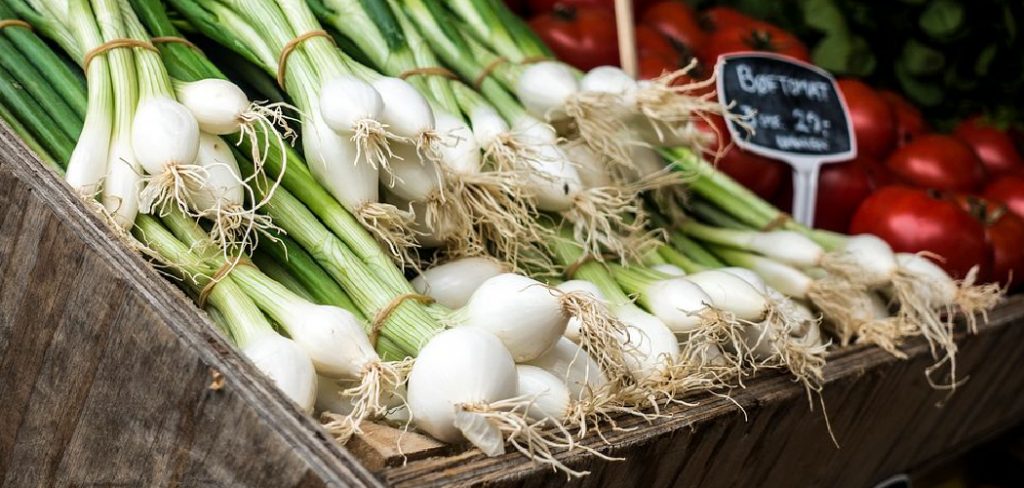
Importance of Proper Storage
Proper storage of spring onions is crucial for several reasons. Firstly, it helps maintain their crisp texture and vibrant green color, which are essential for both the quality and appearance of your dishes. Storing them correctly also prevents them from wilting or becoming slimy, which can lead to unnecessary waste. Additionally, proper storage extends their shelf life, ensuring that you always have a fresh supply on hand whenever you need them. By taking a few simple steps to store spring onions properly, you can save money, reduce food waste, and enhance the flavor of your meals.
Common Storage Mistakes
When it comes to storing spring onions, there are several common mistakes that can lead to spoilage or reduced quality. One frequent error is leaving them in the original plastic packaging or store bag for too long, as this can trap moisture and cause the onions to become slimy. Another mistake is storing them in a warm or dry environment, which can cause them to wilt and lose their crispness. Additionally, some people cut off the roots before storing spring onions, which can shorten their shelf life by reducing their ability to retain moisture. Ensuring proper airflow, avoiding excess moisture, and retaining their roots are all key to preventing these mistakes and keeping your spring onions fresh.
10 Methods How Do You Store Spring Onions
1. Store in the Refrigerator in a Plastic Bag
The most common and easy method to store spring onions is in the refrigerator. After purchasing fresh spring onions, trim the roots and place them in a plastic bag. The bag helps retain moisture, preventing the onions from drying out. Make sure to leave the bag slightly open or poke a few holes in it to allow for air circulation, which helps to avoid mold growth. Storing spring onions in the fridge can extend their freshness for about a week, keeping them crisp and ready to use when needed.
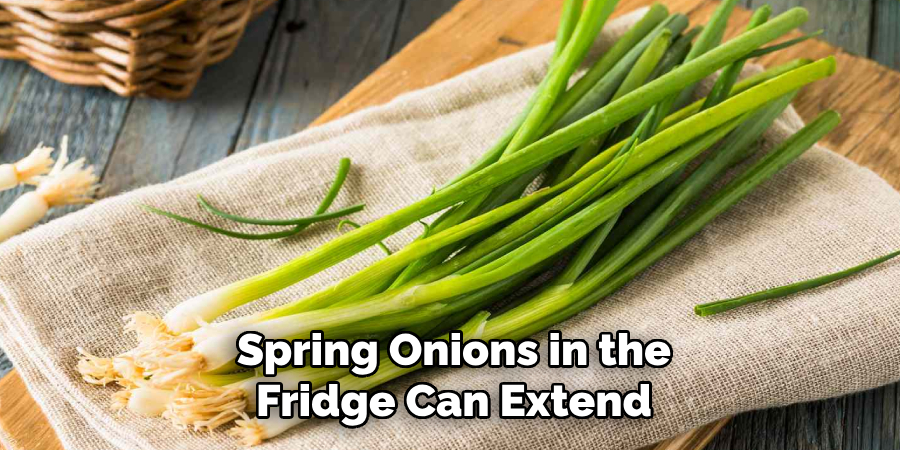
2. Store in a Jar of Water
If you want to keep your spring onions fresh for a longer time and even allow them to regrow, storing them in a jar of water is a fantastic option. Simply place the spring onions, roots down, into a jar or glass of water, ensuring the roots are submerged. Keep the jar on your kitchen counter or in a well-lit area. Change the water every few days to maintain freshness. This method not only keeps the spring onions fresh for up to two weeks but also encourages regrowth, so you can harvest fresh greens over and over.
3. Wrap in a Damp Paper Towel
Another method to keep your spring onions fresh is by wrapping them in a damp paper towel. After trimming the roots, lay the spring onions on a paper towel and lightly dampen it with water. Then, wrap the paper towel around the spring onions and place them in a plastic bag or airtight container. This method provides moisture without excess water, which helps prevent the onions from wilting. Stored in the fridge, this technique can help maintain freshness for several days.
4. Freeze for Long-Term Storage
If you have a surplus of spring onions or you want to store them for a longer period, freezing is an excellent method. To freeze spring onions, first clean and chop them into small pieces, removing any tough or wilted parts. Then, blanch the chopped spring onions in boiling water for 1-2 minutes, followed by a quick dip in ice water to stop the cooking process. Dry them thoroughly using a paper towel and spread the pieces on a baking sheet to freeze individually before transferring them to a freezer-safe bag. Frozen spring onions can last for several months and are perfect for adding to soups, stews, and casseroles.
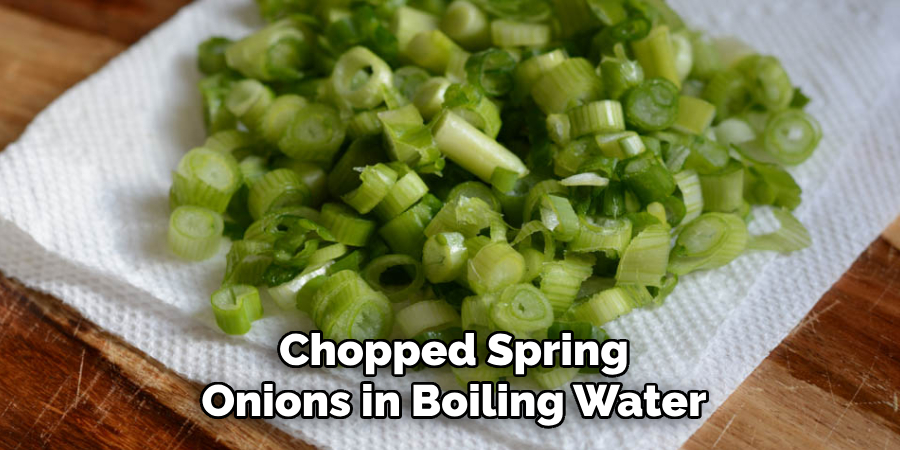
5. Store in an Airtight Container
If you prefer to store your spring onions in the refrigerator without using a bag, an airtight container is another viable option. Place the spring onions in a clean, dry container with a tight-fitting lid. This method helps maintain the crispness of the onions by preventing moisture loss. You can also add a paper towel to the container to absorb any excess moisture and prevent the onions from becoming too soggy. An airtight container can keep the spring onions fresh for up to a week, and it helps to prevent them from absorbing odors from other foods in the fridge.
6. Keep in a Produce Drawer
Storing spring onions in a dedicated produce drawer in the refrigerator is another great option. The controlled temperature and humidity levels in these drawers help maintain the freshness of vegetables like spring onions. When using this method, store the spring onions in their original packaging or in a loosely tied plastic bag to maintain moisture levels. If you have a crisper drawer that is specifically designed to regulate humidity, this method can help keep the spring onions fresh for about a week to ten days.
7. Store in the Pantry or Countertop for Short-Term Use
If you plan to use your spring onions within a couple of days, you can store them at room temperature on your countertop or in a pantry. Place the onions in a dry, cool spot with indirect sunlight. A small basket or open bowl is ideal for short-term storage. Keep the spring onions away from direct heat or sunlight, as this can cause them to wilt and spoil faster. This method works well for fresh spring onions that will be used immediately in cooking, but for longer-term storage, refrigeration is preferable.
8. Store in a Garden Bed or Planter to Regrow
If you’re interested in regrowing your spring onions, you can store them in a garden bed or planter. Simply place the trimmed spring onions (with roots intact) in a container with well-draining soil. Bury the roots just below the surface, leaving the green stalks exposed. Ensure the planter is in a sunny location and water regularly. The onions will grow back within a few weeks, and you can harvest fresh greens as needed. This method is ideal for those who want to have a constant supply of fresh spring onions at home.
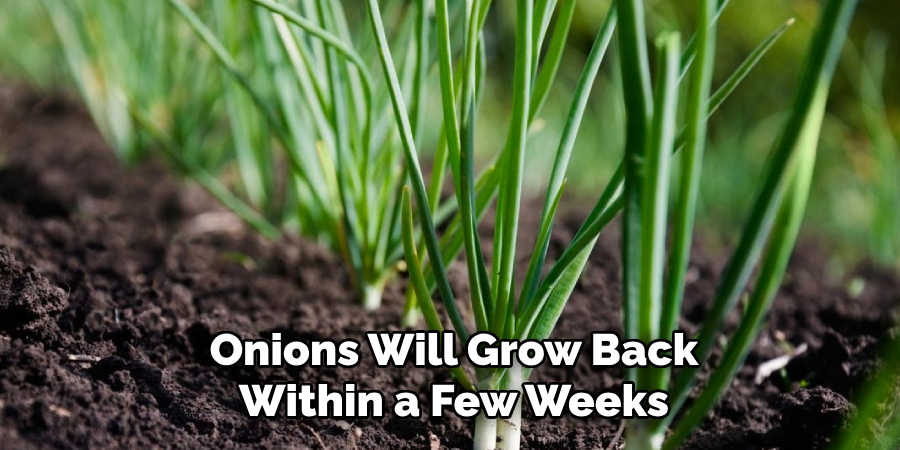
9. Store in a Wet Sponge or Cloth
For a unique and effective method, consider storing your spring onions in a wet sponge or cloth. Take a clean sponge or cloth and dampen it with water, ensuring it’s not soaking wet but just moist enough to provide moisture. Place the spring onions on top of the wet material and cover them loosely with another cloth or place them inside a container. This method helps to retain moisture and prevent the onions from drying out, keeping them fresh for several days.
10. Store in a Vegetable Keeper
A vegetable keeper is a special storage container designed to optimize the freshness of vegetables like spring onions. These containers are typically made of breathable materials, such as plastic with small holes or mesh designs, which allow for proper air circulation while maintaining moisture levels. Vegetable keepers often have humidity control settings, making them an excellent option for storing spring onions in the refrigerator. By regulating temperature and humidity, vegetable keepers can extend the shelf life of your spring onions for up to two weeks.
Things to Consider When Storing Spring Onions
When storing spring onions, it’s important to consider factors such as the intended storage duration, the condition of the onions, and the storage method that best suits your needs. Freshness is key—always start with spring onions that are crisp and vibrant, avoiding any that show signs of wilting or decay. For short-term use, quick and simple methods like storing them on the countertop or in a produce drawer may suffice.
However, if you’re looking to extend their shelf life, techniques like freezing, regrowing, or using airtight containers provide better results. Additionally, ensure proper moisture control during storage; too much moisture can cause rotting, while too little can lead to wilting. By tailoring your approach to your specific needs and using the methods outlined, you can maximize the flavor, freshness, and usability of your spring onions.
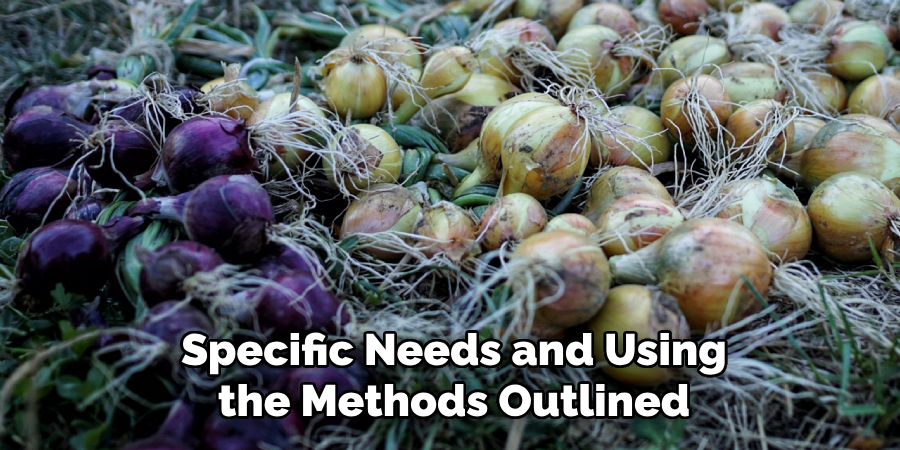
Conclusion
Proper storage of spring onions ensures that you can enjoy their fresh flavor and crisp texture for as long as possible. With a variety of methods available, from refrigeration and freezing to regrowing and using specialized storage tools, there’s an option to suit every need and lifestyle. By choosing the right technique based on your planned usage and storage duration, you can minimize waste and keep your spring onions in peak condition. Thanks for reading, and we hope this has given you some inspiration on how do you store spring onions!
Professional Focus
Angela Ervin, a former interior designer turned blogger, specializes in kitchen design and renovations. Through her website, she blends her passion for cooking with design expertise, sharing practical and creative ideas. Known for balancing functionality and beauty, Angela’s insightful content has made her a trusted voice in home design and lifestyle.
About the Author
Angela Ervin, an experienced interior designer and blogger, combines her passion for kitchen renovations with storytelling. Living in Petersburg with her family, she enjoys cooking and testing her projects firsthand. Known for her humor and relatable style, Angela shares creative, functional design insights through her content, making her a trusted voice in home design.
Education History
University: Virginia Commonwealth University
Degree: Bachelor of Fine Arts (BFA) in Interior Design
- Angela’s education at VCU focused on mastering core interior design principles, including spatial planning, color theory, materials selection, and sustainable design practices.
- She gained hands-on experience through studio projects and collaborative design exercises, which honed her ability to create functional and aesthetically pleasing environments.
- Her coursework also emphasized problem-solving and practical applications of design, preparing her for real-world projects like her self-directed kitchen renovations.
- The program’s strong foundation in both technical skills and creative expression shaped Angela’s ability to seamlessly integrate form and function in her work.


